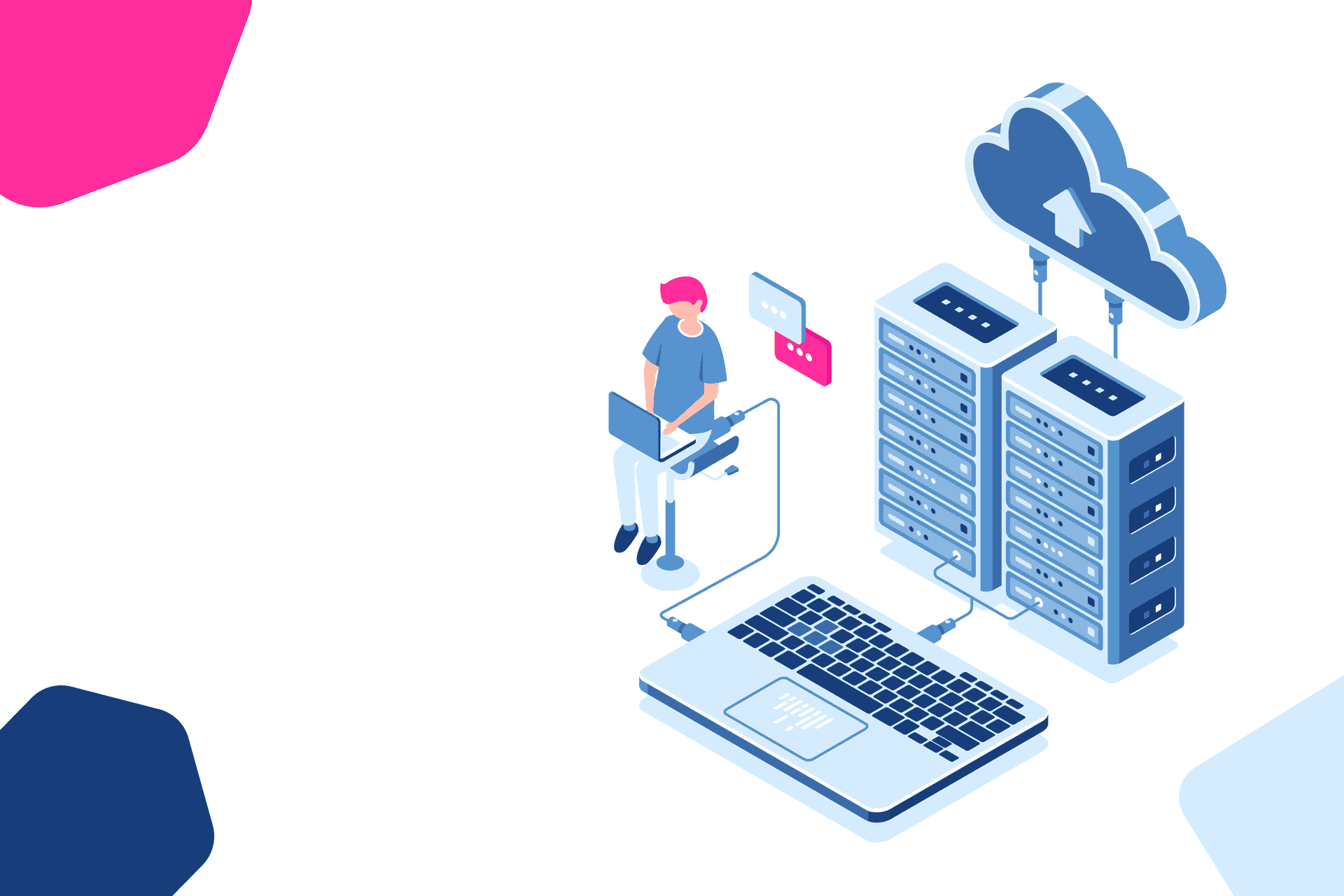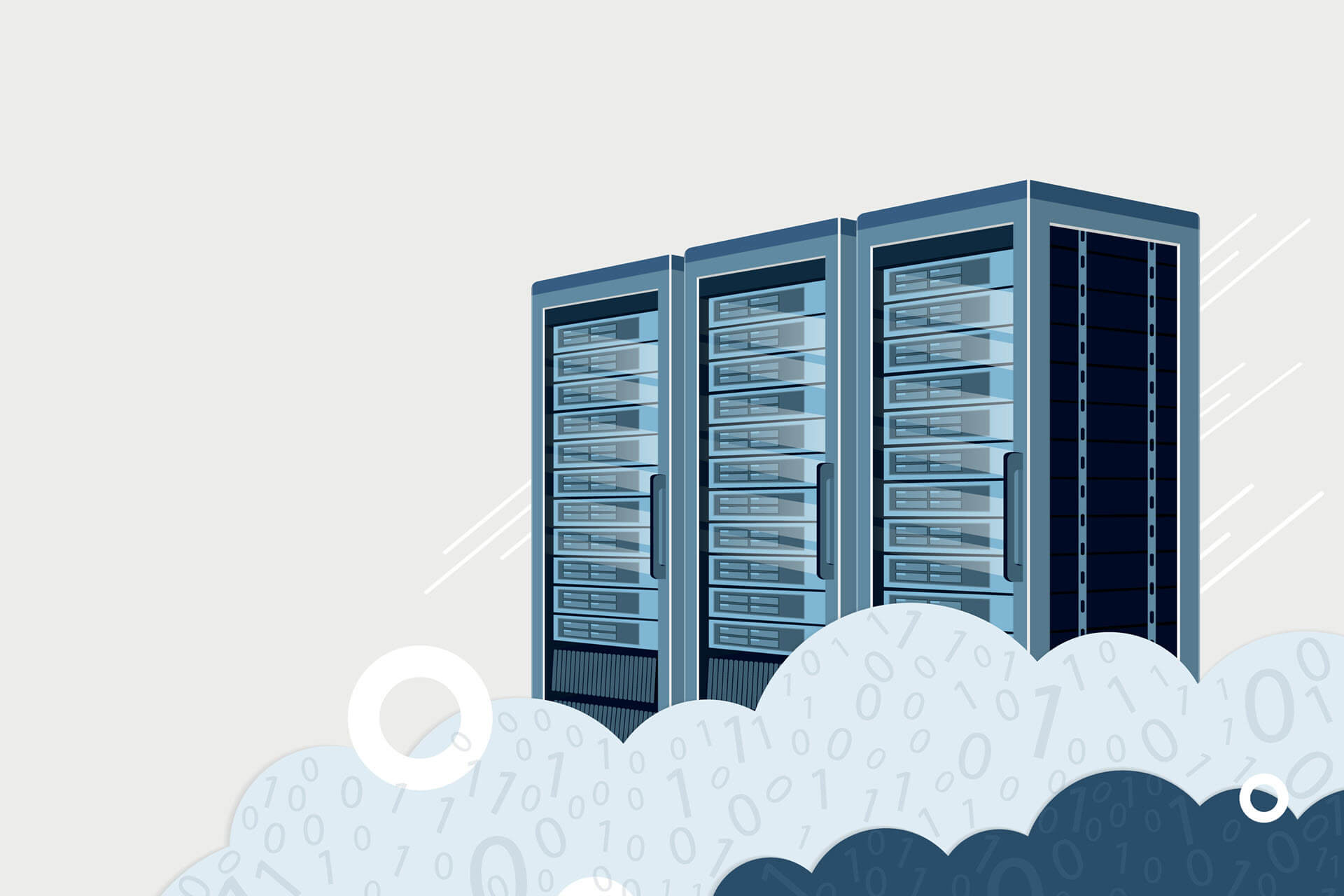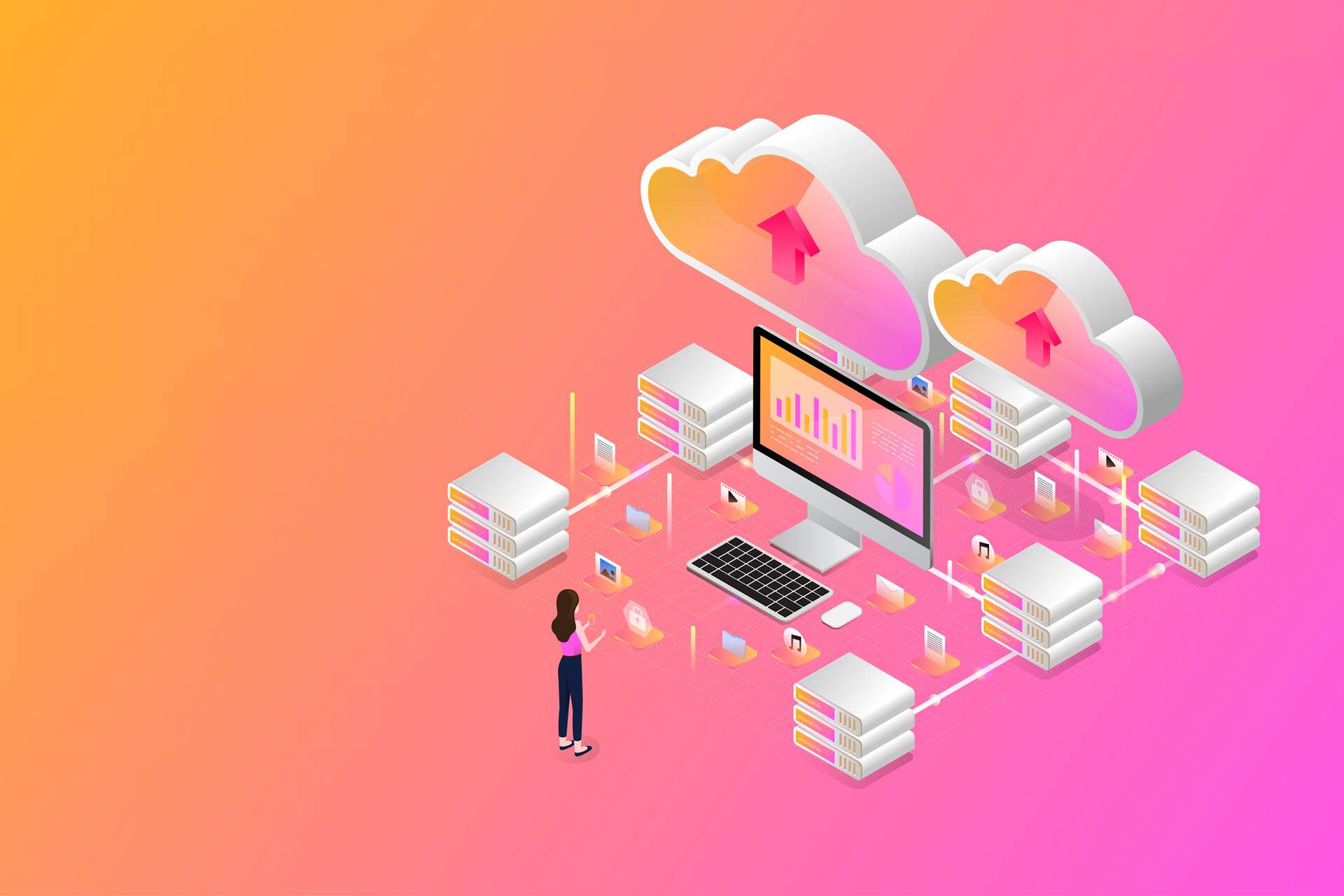Data migrations often get overly complex and time-consuming if you do not use adequate tools. A data migration tool speeds up and simplifies data transfers, making these platforms a no-brainer investment for most migration projects. Tools also lower the likelihood of costly complications like temporary file unavailability, data corruption, or permanent losses.
This article presents 14 top-tier data migration tools that enable you to move data between different storage systems smoothly. Jump in to read the reviews of the market's top migration tools and see which one makes the most sense for your data transfer needs.
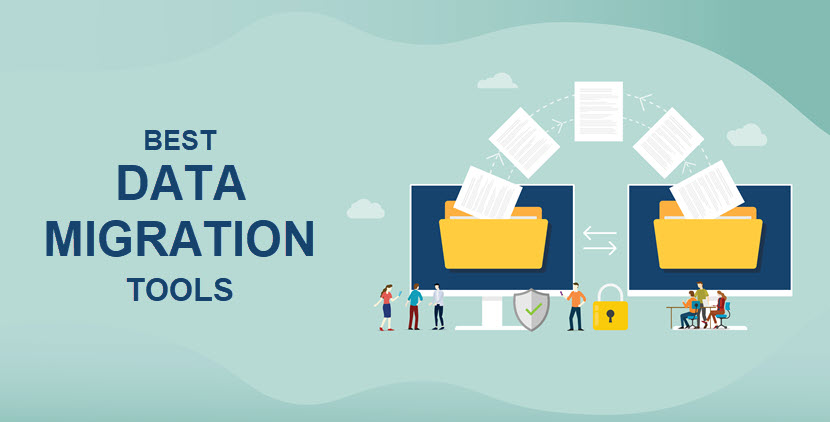
Proper tooling is not the only necessity for a successful migration. Our guide to database migrations explains how to create optimal strategies for moving data between two storage solutions.
Data Migration Tool Types and Options
There are three general types of data migration tools to choose from, each intended for different use cases. These three types are:
- Self-scripted tools. These tools are custom scripts or programs that companies build in-house and use to extract and load data from one system to another.
- On-prem tools. These third-party data migration tools enable you to migrate data between on-prem servers or databases.
- Cloud-based tools. These third-party tools enable you to migrate data to, from, and between cloud computing environments.
The table below offers an in-depth comparison of the three main types of data migration tools.
| Point of Comparison | Self-Scripted Tools | On-Prem Tools | Cloud-Based Tools |
|---|---|---|---|
| Main Selling Point | Custom-built for the migration project. | Low latency and no external data exposure. | High scalability and flexible pricing models. |
| Go-To Use Cases | Small migrations and when teams can't find a tool that supports both the source and target location. | Migrations within internal networks and transfers with strict security requirements. | Migrations from on-prem to cloud systems or between cloud environments. |
| Customization Options | High. | Moderate. | Limited to moderate. |
| Ease of Use | Requires technical expertise. | Depends on the vendor. | Emphasizes user-friendly interfaces and simplified workflows. |
| Security and Compliance | Customizable to meet specific security and compliance requirements. | Often designed with enterprise-grade security features and compliance standards. | Often has built-in compliance with major standards (but requires trust in the provider's security). |
| Costs | Development and maintenance costs. | Software license and support costs. | Subscription-based costs. |
| Support | Self-supported. | Vendor support. | Vendor support. |
| Performance | Dependent on script efficiency. | Optimized for on-prem environments. | Optimized for cloud environments. |
| Scalability | Limited. | Limited. | High. |
| Update and Maintenance | Teams must manually perform updates and maintenance. | Teams must manually apply vendor-provided updates. | The vendor handles updates and maintenance. |
On the market for a top-tier database server? Check out pNAP's selection of database servers and see which hardware setup makes the most sense for your storage needs and priorities.
Best Data Migration Tools
Below are reviews of the 14 best data migration tools for transferring data from one storage system to another. We included both free and paid tools in our list, so you'll find what you need regardless of your budget.
Astera Centerprise

Astera Centerprise is an on-prem Windows-based data integration tool that assists teams with data extraction, transformation, and loading (ETL) processes. This user-friendly platform enables users to design and execute data integration workflows without the need for extensive coding skills.
Astera Centerprise supports a range of data sources, including databases (Oracle, SQL Server, MySQL, etc.), XML, JSON, flat files, and various web services. This flexibility makes the tool an excellent choice for organizations dealing with various data formats and structures.
Astera Centerprise excels in automating data migration tasks. The tool is best suited for:
- Legacy system migrations with complex data structures.
- Data warehousing from disparate sources.
- Real-time data integration across multiple platforms.
- Hierarchical data migrations (XML, EDI, etc.).
Astera Centerprise comes in four tiers, all with custom pricing. There is a demo version for each edition of the tool.
Main Pros of Astera Centerprise
- A user-friendly, drag-and-drop interface enables no-coding data migrations.
- A focus on automating complex data migration workflows.
- Support for a wide range of data sources and formats.
- High-performance parallel processing suitable for large volumes of data.
- Rich hierarchical data mapping capabilities.
- Data quality and profiling features help maintain the integrity of processed data.
- Over 200 built-in tools for moving and processing data.
Informatica PowerCenter

Informatica PowerCenter is a data integration platform that enables high-performance ETL processes across on-prem, cloud, and hybrid environments. The platform's visual interface and advanced features simplify the development and management of integration workflows.
Informatica PowerCenter connects seamlessly with all leading DBMSes and can perform advanced data transformations for:
- XML files.
- JSON files.
- Unstructured documents.
- Industry-specific formats (like HL7 or EDI).
- Legacy formats (COBOL).
Informatica PowerCenter is excellent at supporting growing data volumes of varying formats. The tool makes it easy to use metadata, reuse components across projects, and search/profile data. PowerCenter's go-to use cases are:
- Migration of data from on-prem systems to cloud platforms.
- Real-time data synchronization between operational systems and data warehouses.
- Data integration from multiple sources (CRM systems, transactional databases, marketing platforms).
Informatica PowerCenter offers a free trial, after which users get charged based on consumption rates.
Main Pros of Informatica PowerCenter
- Parallel ETL processing and scalable architecture suitable for large volumes of data.
- Comprehensive support for a range of data sources and targets.
- An intuitive visual interface reduces the complexity of data integration processes.
- Advanced data profiling, cleansing, and validation capabilities.
- Custom rule-based workflows.
- An extensive library of pre-built connectors.
- A cloud-native integration service (PowerCenter) enables you to extract, load, and convert data from various sources.
Oracle Data Service Integrator

Oracle Data Integrator stands out for its Extract, Load, Transform (ELT) architecture that leverages the underlying database's power to process transformations. That way, the tool removes the need for a separate transformation server.
Oracle Data Integrator's primary strength is efficiently managing high-volume data integrations across diverse databases, systems, and applications. Go-to use cases for this tool are Oracle database migrations that involve:
- Real-time data replication for analytics and reporting.
- Cross-platform data synchronization for hybrid cloud environments.
- Data consolidation for regulatory compliance and auditing purposes.
- Integration of IoT data streams.
- Creation of data lakes for centralized storage.
Oracle Data Integrator's pricing is not public and varies based on the deployment model, the scale of the operation, and additional services or support packages.
Main Pros of the Oracle Data Integrator
- Broad support for heterogeneous data sources and targets.
- Support for real-time and batch data integration.
- An extensive set of pre-built modules.
- Support for a wide range of data sources, including relational databases, XML, JSON, flat files, and big data systems.
- Advanced data quality and governance features.
- Compatibility diagnostics, including analysis of the data source and the target destination.
- Robust security features, including encryption and secure agent communication.
- Tight integration with Oracle databases and cloud services.
ETL and ELT differ in two primary ways. Firstly, ETL transforms data on a separate processing server, while ELT transforms data within the data warehouse. Secondly, ETL does not transfer raw data into the data warehouse, while ELT sends raw data directly to the data warehouse.
Talend Data Fabric

Data Fabric, Talend's flagship product, combines data migration, integration, and governance functions into a single cloud-based tool.
Data Fabric enables you to prepare and manage the entire migration cycle. The two standout features are excellent automated quality checks as data moves between locations and visual mapping for more complex data structures.
Data Fabric simplifies the process of working with data across various sources and destinations. The tool has an excellent drag-and-drop interface, while more complex migrations require expertise in Java. Data Fabric is suitable for:
- Cloud data migration and integration for hybrid environments.
- IoT data aggregation.
- Customer data integration.
- Data lake implementation for centralized data storage and analytics.
Talend Data Fabric offers a 14-day free trial. The price then depends on the selected package, number of users, and level of required support (Silver, Gold, Platinum, or Mission Critical).
Main Pros of Talend Data Fabric
- Wide range of functionalities for ETL, data quality, and data management.
- Support for a broad array of data sources and targets.
- High scalability makes the tool suitable for both small and large-scale data transfers.
- A long list of available connectors and integrations.
- An intuitive drag-and-drop interface.
- Compliance with several major industry standards, including HIPAA, GDPR, and CSA STAR.
- A large ecosystem of plugins and additional components.
IBM InfoSphere

IBM InfoSphere is a data integration platform that offers a wide range of capabilities for cleansing, transforming, delivering, and governing data. The tool enables you to manage and migrate data across on-prem, cloud, and hybrid environments.
IBM InfoSphere includes a suite of tools and capabilities for ETL processes, data profiling, governance, and metadata management. The tool is suitable for teams that must integrate and transform data across diverse systems and environments. IBM InfoSphere excels at:
- Migrations from legacy systems to modern platforms.
- Database consolidation for streamlined data management and cost reduction.
- Cloud data migrations (from one cloud platform to another or from the cloud to on-site systems during data repatriations).
IBM InfoSphere's pricing is not transparent. The cost depends on various factors, including the selected components and whether the deployment is on-prem or in the cloud.
Main Pros of IBM InfoSphere
- High scalability and performance enable the tool to handle large and complex data volumes.
- Support for a wide range of data sources, including relational databases, big data formats, and cloud-based data.
- Advanced data quality, profiling, and cleansing features.
- Robust metadata management and data governance tools help maintain data lineage and compliance.
- Access to several IBM platforms (DataStage, QualityStage, and Information Governance Catalog).
- An extensive suite of analytics.
- Continuous updates and innovations from IBM.
EaseUS Todo PCTrans
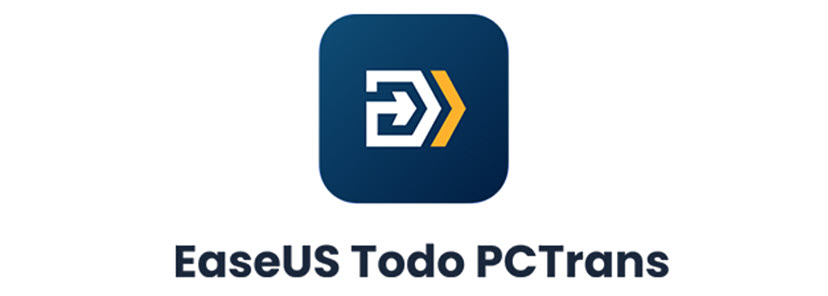
EaseUS Todo PCTrans is a user-friendly tool that simplifies the process of transferring files, apps, and settings between PCs. The tool supports various data types, including documents, photos, videos, music, apps, and settings. The software offers multiple transfer modes, including via:
- Network connections.
- Image files.
- Local transfers.
EaseUS Todo PCTrans is ideal for migrating data and apps from one PC to another without reinstalling the OS. The tool is handy in the following use cases:
- Transferring data across different operating system versions.
- Upgrading to a new computer.
- Transferring files between a work and a personal device.
- Migrating from an HDD to an SSD.
EaseUS Todo PCTrans offers a free version that allows you to migrate 2 GB of data and five programs. The paid version costs $49.95/month and offers more advanced features, including unlimited app transfers and technical support.
Main Pros of EaseUS Todo PCTrans
- An easy-to-use interface.
- A straightforward migration process ideal for smaller, one-time migrations.
- Support for a wide range of data types and apps.
- A step-by-step wizard makes the tool accessible to users of all technical levels.
- Several transfer modes to suit different scenarios.
- Data cleanup on the source PC.
- Excellent documentation for troubleshooting.
Matillion

Matillion is a cloud-based ETL tool for extracting, transforming, and loading data. The tool's low-code visual interface for designing and managing data pipelines enables users to move files to and from cloud warehouses or databases easily.
Matillion's ability to connect to various data sources (including databases, APIs, and file systems) makes it a versatile tool ideal for integrating and transforming data from various systems. Typical use cases include:
- Cloud data warehouse migration.
- Real-time data replication between on-site and cloud systems.
- Data lake migration for centralized storage and analytics.
Matillion offers a 14-day free trial for new users. Once the trial ends, users choose between three hourly plans (Basic, Advanced, Enterprise).
Main Pros of Matillion
- Excellent at cloud database migrations.
- Support for ELT, ETL, and reverse ETL.
- A user-friendly drag-and-drop interface enables non-technical users to set up and manage data operations.
- Bidirectional data flows, system synchronization, and post-load transformations.
- Real-time replication of database changes using log-based data capture.
- Real-time feedback, validation, and data previews.
- Over 80 pre-built connectors to well-known SaaS services.
Apache NiFi
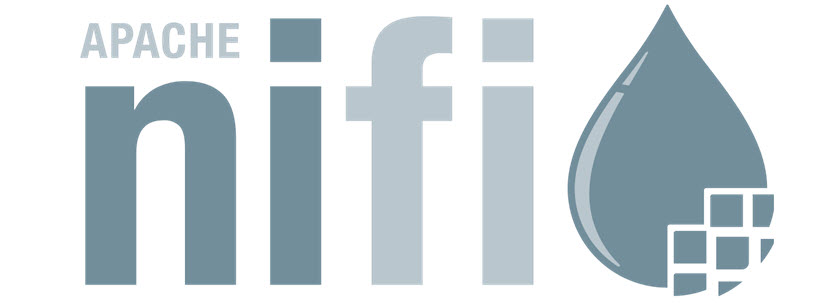
Apache NiFi is an open-source data integration and flow automation tool for managing data transfer between disparate systems. This tool offers a highly configurable and flexible platform for data integration tasks.
Apache NiFi provides a web-based user interface for designing, controlling, and monitoring data flows. NiFi's design focuses on ease of use, rapid deployment, and support for scalable data routing, transformation, and system mediation logic.
Apache NiFi is a crucial tool for data ingestion, processing, and distribution in complex data architectures. Here are the usual migration use cases for Apache NiFi:
- Real-time database replication for disaster recovery and failover.
- Cloud data migration between on-prem and cloud environments.
- Migrations during legacy system decommissioning.
- IoT data ingestion for real-time monitoring.
Apache NiFi is a free and open-source tool released under the Apache License (Version 2.0).
Main Pros of Apache NiFi
- An architecture that supports high availability and scalable deployments.
- An intuitive web-based UI simplifies the design, management, and monitoring of data flows.
- Data provenance features for tracking and auditing data flows.
- Robust error handling and recovery mechanisms.
- Support for a wide range of data formats and systems (databases, cloud services, IoT devices, etc.).
- An extensive library of pre-built processors and connectors.
- Built-in support for secure data transmission, including SSL, SSH, and HTTPS.
CloverDX

Clover DX (until recently known as CloverETL) is a platform for developing, orchestrating, and executing data operations. This tool offers a visual design interface for data transformations and integrations, while more skilled teams can write custom code to extend the platform's functionality.
CloverDX is particularly effective for complex data integration projects that require high levels of customization and flexibility. The tool is well-suited for:
- Big data ETL processes.
- Seamless data transformations during modernization projects.
- Data lake implementations.
- Migrations that must cleanse and transform data from disparate on-prem and cloud sources.
CloverDX's Standard package costs $5,500/unit per year (minimum of 3 units). The two other tiers (Plus and Enhanced) have custom prices based on the agreed number of environments, servers, and level of support.
Main Pros of CloverDX
- A robust data transformation engine capable of processing large volumes of data efficiently.
- Top-tier support for both on-prem and cloud deployments.
- Highly customizable and flexible.
- An emphasis on automation and operational efficiency.
- Support for a wide range of data sources and formats, from traditional databases and flat files to cloud-based services and real-time data streams.
- Detailed documentation and resources for troubleshooting.
Myddleware

Myddleware is an open-source data integration tool for transferring and synchronizing data between various software apps. This tool enables users to connect and automate data flows between various apps, including popular CRM, ERP, e-commerce, and marketing platforms.
Myddleware stands out for its user-friendly interface and flexibility. The tool is accessible to businesses of all sizes that need to connect different systems without extensive technical expertise.
Despite being free, Myddleware offers comprehensive functionality that caters to various data migration needs. The tool is well-suited for tasks such as:
- Synchronization between CRM and ERP systems.
- Integration of order data between ERP and shipping systems.
- Migration of customer data from CRM to cloud storage.
Myddleware is an open-source tool, so it's completely free to download and use.
Main Pros of Myddleware
- A user-friendly web GUI simplifies the setup of data integration tasks.
- Real-time data synchronization ensures timely updates across systems.
- Flexible rule configurations.
- Detailed data mapping and transformations.
- Error handling capabilities help manage and resolve data transfer issues.
- Community-supported development leads to continuous improvements and new features.
Integrate.io

Integrate.io (formerly Xplenty) is a cloud-based data integration platform that offers various migration features, including ETL, reverse ETL, and ELT. The tool features a single interface for managing, converting, and transferring data between systems and applications.
Integrate.io is well-suited for teams that want to move data to the cloud and require robust data pipeline management, automation, and real-time monitoring. Most adopters require integration with a variety of data sources without the need for extensive coding. The most common use case for Integrate.io is extracting and loading mission-critical data for reporting and analysis.
Integrate.io has a 14-day free trial, after which users choose between three plans: Starter ($1,250/month), Professional ($2,083/month), and Enterprise (custom pricing).
Main Pros of Integrate.io
- A suite of tools for loading data from various sources into a single data warehouse.
- Simple migrations of data from on-prem and legacy systems to the cloud.
- Various data transformation capabilities (filtering, joining, converting, etc.).
- A visual workflow builder makes it easy to create and manage data pipelines.
- Support for data replication and change data capture (CDC).
- Seamless integration with SQL, Oracle, Teradata, DB2, and SFTP servers.
Hevo Data

Hevo Data is a cloud-based data integration platform that automates data migration, replication, and integration processes. The tool enables teams to extract, transform, and load data from various sources into a destination data warehouse.
Hevo Data supports integrations with a wide range of data sources, including databases (SQL, NoSQL), cloud services (e.g., Salesforce, Google Analytics), files (e.g., CSV, JSON), and apps (e.g., Shopify, Zendesk). Here are a few common use cases for this tool:
- Consolidating data from multiple databases from different business units.
- Extracting data from legacy systems, transforming files, and loading them into a new app.
- Archiving historical data from production systems to long-term storage.
- Integrating real-time customer data for personalized marketing campaigns.
- Migrating product inventory data between multiple platforms.
Hevo Data offers a free edition that enables moving minimal amounts of data (up to one million updates, inserts, or deletes per month). The three paid editions (Starter, Professional, and Business Critical) don't have such a strict per-month limit and offer a range of extra features.
Main Pros of Hevo Data
- An intuitive no-code UI.
- A cloud-native architecture enables the tool to handle large volumes of data and scale with the needs of its users.
- Quick and straightforward pipeline setups.
- Robust data transformation capabilities (data type conversion, filter, aggregate, enrich, etc.).
- Pre-built connectors for popular data sources.
- Full compliance with HIPAA, SOC 2, and GDPR.
- High data security standards with end-to-end encryption and a host of secure connection options (SSH, Reverse SSH, and VPNs).
Are you migrating high-value data? Learn about database security and see what it takes to keep your freshly migrated files safe, confidential, and available.
SnapLogic

SnapLogic is an integration platform as a service (iPaaS) that enables teams to connect apps, data sources, and APIs to automate business processes and workflows. The tool offers a wide range of integration capabilities, including:
- Data migration.
- App integration.
- API management (versioning, authentication, throttling, and monitoring).
- Workflow automation.
SnapLogic supports full and incremental data loading, schema mapping, and validation to ensure accurate and efficient migrations. Here are some use cases for this tool:
- Moving data from an on-prem warehouse to a cloud-based solution.
- Implementing a data lake to store and analyze large volumes of structured or unstructured data.
- Synchronizing customer data between CRM and marketing platforms.
- Integrating HR data from a legacy system into a modern HRIS platform.
SnapLogic does not have transparent pricing. You get a custom price after a demo based on your requirements.
Main Pros of SnapLogic
- A drag-and-drop interface for designing integration workflows and pipelines.
- Powerful data transformation capabilities allow users to alter, cleanse, and enrich data.
- More than 700 pre-built Snaps (integration components) for connecting to various apps, APIs, and cloud services.
- A generative AI solution (SnapGPT) streamlines and speeds data-related tasks.
- Support for both batch and real-time data processing.
Stitch

Stitch is a cloud-based data integration service that specializes in ETL processes. This tool simplifies the process of moving data from various sources into a centralized data warehouse or lake.
Stitch enables users to create automated data pipelines and schedule extraction and loading processes to run at regular intervals or get triggered by certain events. The tool offers some basic data transformation capabilities, so users can perform simple operations like:
- Column mapping.
- Data type conversion.
- Data filtering.
Stitch is a go-to choice for data integration and ETL processes for teams that value ease of use, scalability, and speed. Most adopters use the tool when migrating data from various sources into a central cloud data repository for analytics, reporting, or other purposes.
Stitch's Standard plan starts at $100 per month and has a 60-day free trial. The other two tiers are Advanced ($1250 per month) and Premium ($2500 per month) editions.
Main Pros of Stitch
- Automated, zero-maintenance data pipelines do not require extensive coding or configuration.
- Integration with 140+ popular data sources (CircleCI, Drip, Deputy, Google Analytics, Mailchimp, MariaDB, PostgreSQL, etc.).
- High levels of scalability, reliability, and performance.
- Near-real-time data synchronization with all supported data sources.
- Excellent SLA uptime guarantees.
- Compliance with all major standards (SOC 2 Type II, HIPAA BAA, ISO/IEC 27001, GDPR, and CCPA).
How to Choose a Data Migration Tool?
Choosing a data migration tool involves several considerations to ensure the solution aligns with your needs and goals. Key factors to consider are:
- The volume and type(s) of data you plan to migrate.
- Whether the migration is a one-time occurrence or something you want to perform regularly.
- The number and types of source and target storage systems.
- Specific security and compliance requirements.
- The required migration time frame.
- Customization and integration requirements.
- Whether you're migrating data between on-prem systems or to/from cloud environments (or a combination of both).
Understand the nature of your data sources and targets, including their formats, structures, and compatibility with potential data migration tools. Next, create a list of potential tools you can use for your migration. The reviews above give plenty of options. Then, do the following:
- Check whether the tool falls within your allocated budget.
- Evaluate whether the tool meets your scalability and performance requirements.
- Consider how easy it would be to deploy, configure, and manage the tool.
- Verify whether your team has hands-on experience with the tool or a similar solution.
- Ensure the tool provides fitting security features and complies with relevant regulations.
- Check whether the tool offers customization options or extra features that could benefit your project.
- Consider how well the migration tool integrates with your existing systems and infrastructure.
- Evaluate the total cost of ownership (TCO) associated with the migration tool, including initial licensing, subscription fees, ongoing maintenance, and training expenses.
Once you narrow the list down, conduct proof of concept (POC) projects with sample data for every potential solution. That way, you can test the migration tool's capabilities and suitability to validate its performance, reliability, and ease of use.
Self-scripting is appealing on paper, but remember that this approach requires a considerable time investment and technical know-how. Unless you have a really specific reason for taking the in-house route, we recommend going with a fitting third-party data migration tool.
Pick the Right Tool for the Job
The success of every data migration relies heavily on having the right software in place. Don't make a hasty decision, and take your time when choosing between different solutions. Luckily, you're now familiar with some of the best data migration tools on the market, so you have all the info you need to make the best choice for your project.
